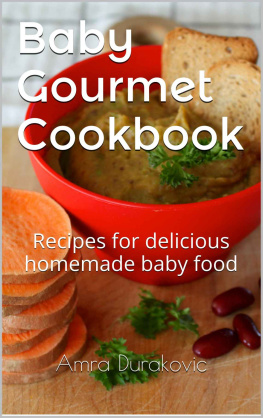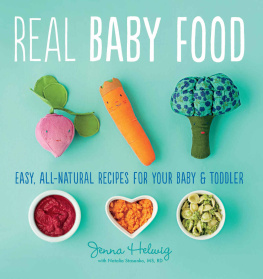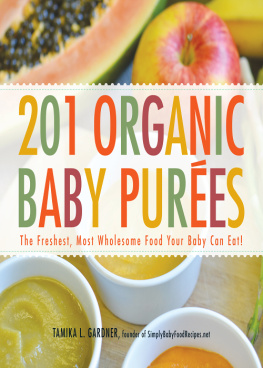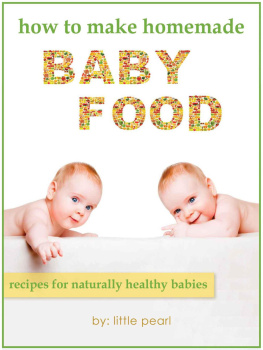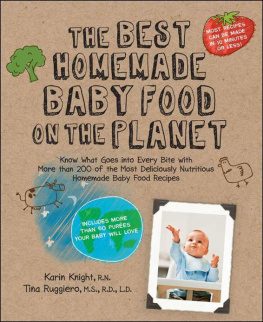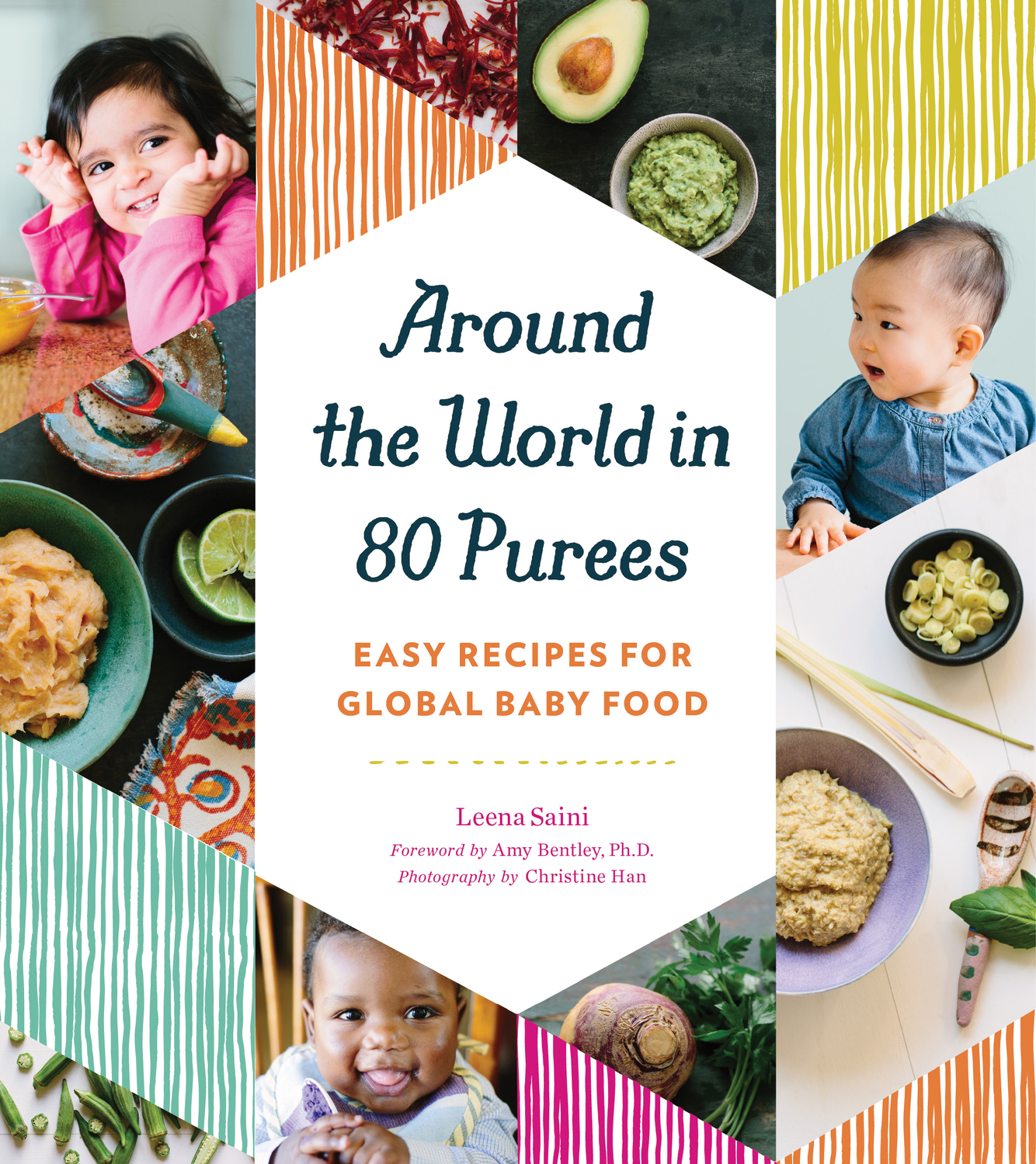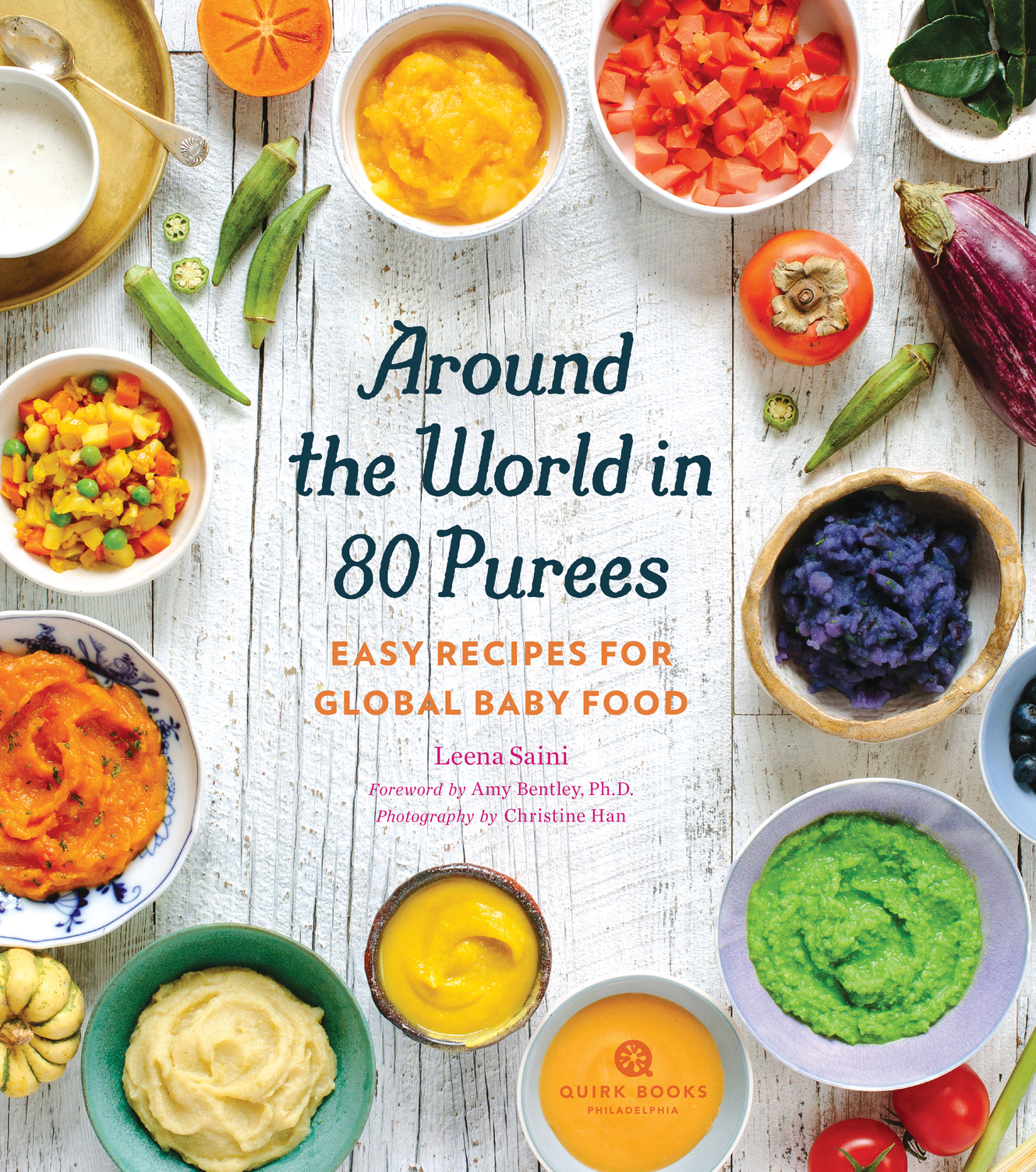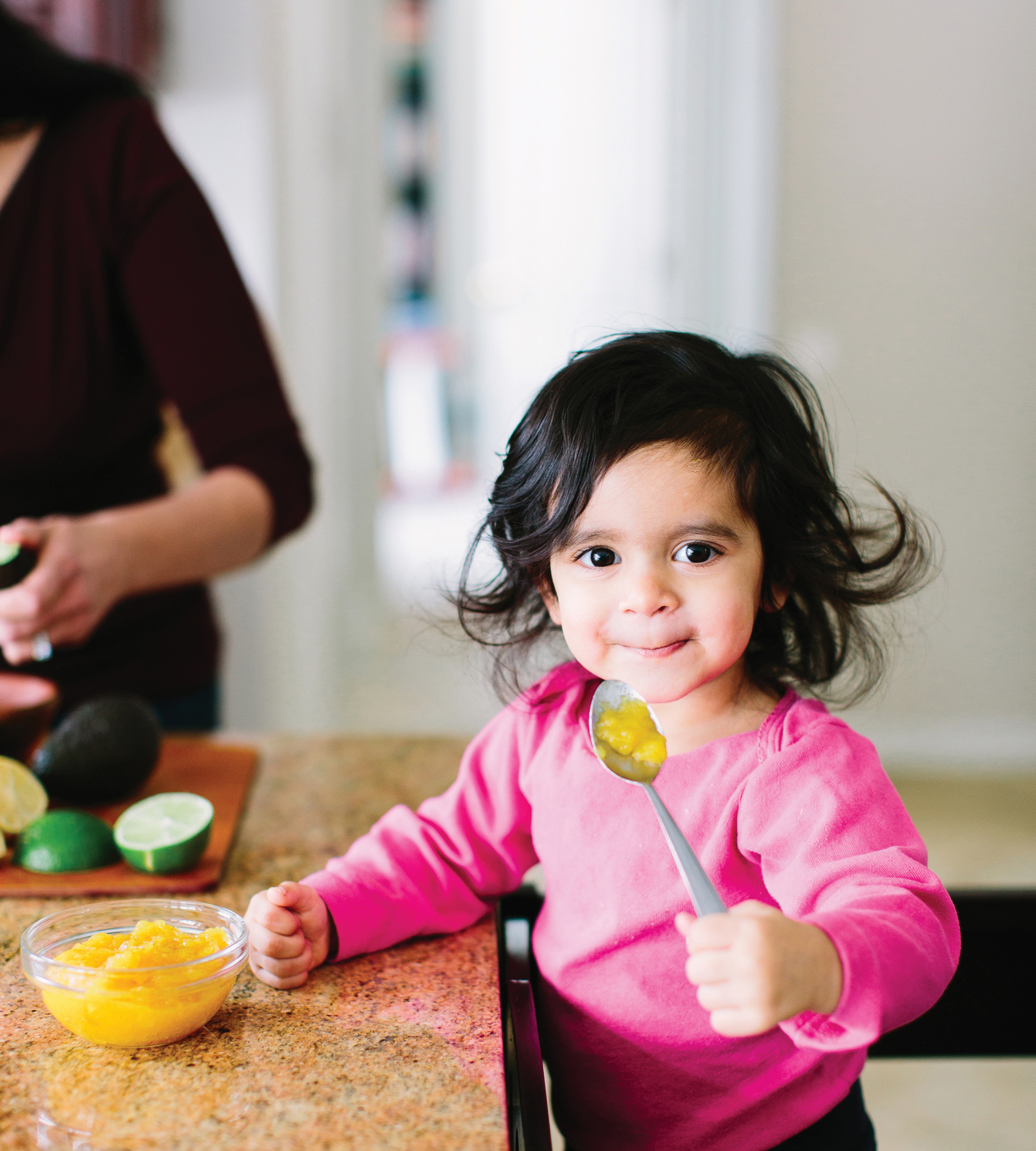Contents
Text copyright 2016 by Leena Saini
Photography copyright 2016 by Christine Han
All rights reserved. Except as authorized under U.S. copyright law, no part of this book may be reproduced in any form without written permission from the publisher.
Library of Congress Cataloging in Publication Number: 2015957078
Ebook ISBN: 978-1-59474-898-1
Hardcover ISBN: 978-1-59474-895-0
Designed by Andie Reid
Production management by John J. McGurk
Photography styling by Yossy Arefi
Ceramic wares courtesy of Shino Takeda and Jessie Lazar
Quirk Books
215 Church Street
Philadelphia, PA 19106
quirkbooks.com
v4.1
a
Dedicated to Sunil, Kirina, Ela, and Jyoti
The four most important souls in my life
Contents
Foreword
By Amy Bentley
Across all societies, parents feed newborns with breast milk or a liquid equivalent at the beginning of the childs life, and at some point all move on to solid food. Between these phases is a transition period, known in the West as weaning, during which the frequency of breast- or bottle-feeding is gradually reduced and the ratio of liquid to solid food shifts. Cultures differ in beliefs about the appropriate age for introducing solids, as well as in their choice of first foods, which could include cereal, soup, congee, minced beef, camel butterfat, avocado, mashed beans, food first masticated by the parent, or a mixture containing the cultures signature combination of herbs and spices. Nearly all cultures, however, regard the transition to solids as significant. It is a moment that signals a decrease, albeit a limited one, in the childs dependence upon the parent and that signals a new period of exploration and interaction with the world.
In the United States weve begun to reexamine how we feed our babies: White rice cereal as a first food? Bland food rather than spiced meals? Introducing new foods slowly? Avoiding peanuts for as long as possible to stave off allergies? Recent research suggests that, in fact, the opposite of all these common practices is beneficial. Further, studies show that taste and smell are crucial to infant development even from the earliest moments.
As Americans have developed more cosmopolitan eating habits and culinary preferences, weve become aware that other cultures feed their infants differently, and it turns out that babies do just fine on curried rice and miso soup. In fact, as the recent spate of parenting books about France suggests, parents in other countries may be more successful at raising healthy, adventurous eaters. Creating a wide variety of globally inspired complementary foods for weaning infants not only is a question of taste, but may also be a question of optimal nutrition and health.
Leena Sainis amazing cookbook comes at exactly the right time. With Around the World in 80 Purees, you have the chance to explore a wide range of tastes and textures for your infant. Dont feel that you have to make baby food from scratch all the time. But when you do, let these recipes be a window into the marvelous, rich array of what baby food can be. Have fun exploring.
AMY BENTLEY, PH.D., is an associate professor in the Department of Nutrition and Food Studies at New York University. A food historian, she is the author of Inventing Baby Food: Taste, Health, and the Industrialization of the American Diet (University of California Press, 2014), which was a finalist for a James Beard Award. Learn more at inventingbabyfood.com.
Introduction
Introducing my daughter Kirina to solid food was one of the experiences of being a new parent that I looked forward to the most. The week her pediatrician gave my husband and me clearance to do so, we went straight to the grocery store and eagerly bought a box of organic baby rice cereal, just as the doctor recommended. We bought Kirina a special spoon, a cute pink bowl, and a bib. When we got home, I grabbed our best camera so I could catch the big cheeky smile she would certainly give us after her first bite. We prepared the cereal and fed her a spoonful.
She spit it out.
I was a little disappointed, but I knew this reaction was normal for a first solid meal. But on day 2 she spit out even more food. Days 3, 4, and 5 went the same way. Finally, to encourage her, I made a show of tasting the cerealand nearly spat it out myself. Yuck! I wouldnt go near this bland, pasty mush. Why was I expecting her to eat it?
So the next day I mashed up an avocado and gave Kirina a taste. She gobbled it up.
Masala Baby
Helping my baby explore a world of flavors became my mission. I thought about the well-seasoned foods my husband and I eat and how I could make them baby-friendly. I scoured grocery store shelves for so-called ethnic baby food, but none existed. So I began to create my own flavorful baby food recipes.
At first, I used my childhood for inspiration, re-creating Indian meals my mom had made for me. I started by mashing dal (an Indian lentil dish) and then added the rice cereal that Kirina had previously rejected. Then I seasoned the mixture with one spice at a time, giving Kirina a chance to grow accustomed to one new flavor before introducing the next. I used this tactic for everything: Sweet potatoes with garam masala. Carrots with oregano for an Italian flair. A bit of cardamom in her applesauce or cinnamon in her pears. Over just a few weeks, Kirina learned to appreciate these new tastes.
She was a budding foodie after all!
Thinking outside the Jar
Next I began to research which foods babies around the world eat as their first meals. I interviewed mothers from different backgrounds; read cookbooks, history books, and international parenting books; even browsed baby food aisles of markets I visited abroad to see what they offered. What I discovered amazed me.
Indian babies eat all sorts of spiced lentils, rice, and curried vegetables as early as six months old. Japanese babies start with miso soup or broths flavored with seaweed, while Chinese babies feast on a rice porridge, known as congee, made with bits of mashed sweet potato or dried fish. Mexican babies are served fresh fruit with a dash of chili powder and a squeeze of lime. In fact, babies around the world usually eat what their parents are eating, only their servings are mashed or pureed. The texture might be different, but the seasonings and spices are the samevibrant and appetizing. As a result, babies acclimate to their cultures tastes as soon as they are ready.





